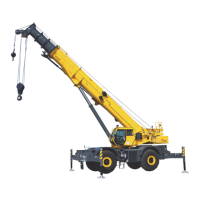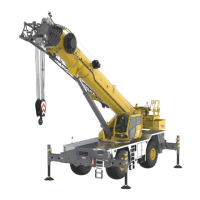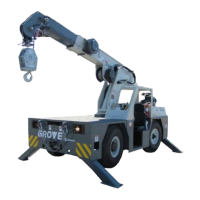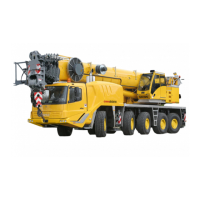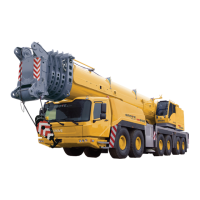Grove Published 7-23-2020, Control # 668-02 4-41
GRT9165 OPERATOR MANUAL OPERATING PROCEDURES
The example in Figure 4-36 shows the value of 10571 mm
for the extension of the telescoping cylinder within the boom.
This is the value from the precision length sensor. The
example also shows a value of 108.8 feet as the overall
boom length. The example shows the T5 boom section had
been previously extended and locked at its 100% pinning
location and the T5 boom section is being pinned at the
100% pinning location. The remaining boom sections are
locked at their 0% pinning location.
As mentioned earlier, there are times when the control
system is performing automated motions. The example in
Figure 4-36 shows some dots at the end of the schematic
graphic (2). These dots, as well as the one dark dot cycling
back and forth to the left and right, indicates that automated
motions are occurring.
Figure 4-37 shows the same screen when the operator is
able to control motions of the boom sections. In this case,
there is a left and/or right pointing arrow (1) (instead of the
dots shown in Figure 4-36). As is consistent with the
schematic's orientation, the left arrow indicates retracting the
boom, the right arrow indicates extending the boom. The
control device (typically the telescope controller in the
standard controller option) would be moved to the left to
retract the boom, and it would be moved to the right to
extend the boom (while keeping in mind that only one boom
section - the boom section the telescoping cylinder is locked
to - would be moving).
The arrows (1, Figure 4-37), at some point in the telescoping
process, will blink. The blinking is an indication that an
unlocking or locking event will occur if the operator holds the
joystick in the direction of that arrow for at least 1 second. If
this event begins, then the screen will change to the dots (as
described for Figure 4-36) so that the operator knows that an
automated motion or action is again occurring.
The RCL must be configured and activated in order to have
automated motions or to have operator control of the
telescoping function. If the Enter Rigging Mode screen on
the RCL display is used (accessed with the '?' icon on the
RCL display), then the telescoping action is paused. When
the check-mark is used on the RCL display to re-activate the
RCL, then the telescoping action resumes (whether
automated motion or operator control).
As seen in Figure 4-37, there are sets of numerical values at
the top portion of the screen above the graphical schematic
of the boom.
First, there is a set of values in a top row with values of 1 to 5
in circles (2, Figure 4-37). The 1 to 5 in the circles indicate
the telescoping boom sections (or “tele sections”). The 1 is
for the boom section that is the largest and closest to the
base section. This is referred to as T1. This then proceeds
from T2 to T5 for the 2 to 5 values.
The values under these boom section indication numbers
represent the requested final boom configuration (or “target
tele picture”) as a percentage. Figure 4-37 shows this set of
values as 0-0-0-100-100 (3). This means that T4 and T5 are
to be extended to the 100% pinning location, and T1, T2, and
T3 are not to be extended. It is vital that the operator
understand that this requested final boom configuration is
the first step in operating the pinned boom in the Semi-auto
Mode. Everything the control system performs with the
Semi-auto Mode is dependent on this requested final boom
configuration.
Second, there is a set of percentage values shown under the
requested final boom configuration values. In Figure 4-37,
these are shown as 0%-0%-0%-0%-0% (4). This represents
the control system's currently computed actual boom
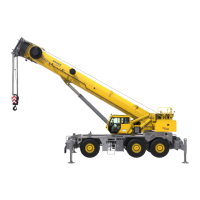
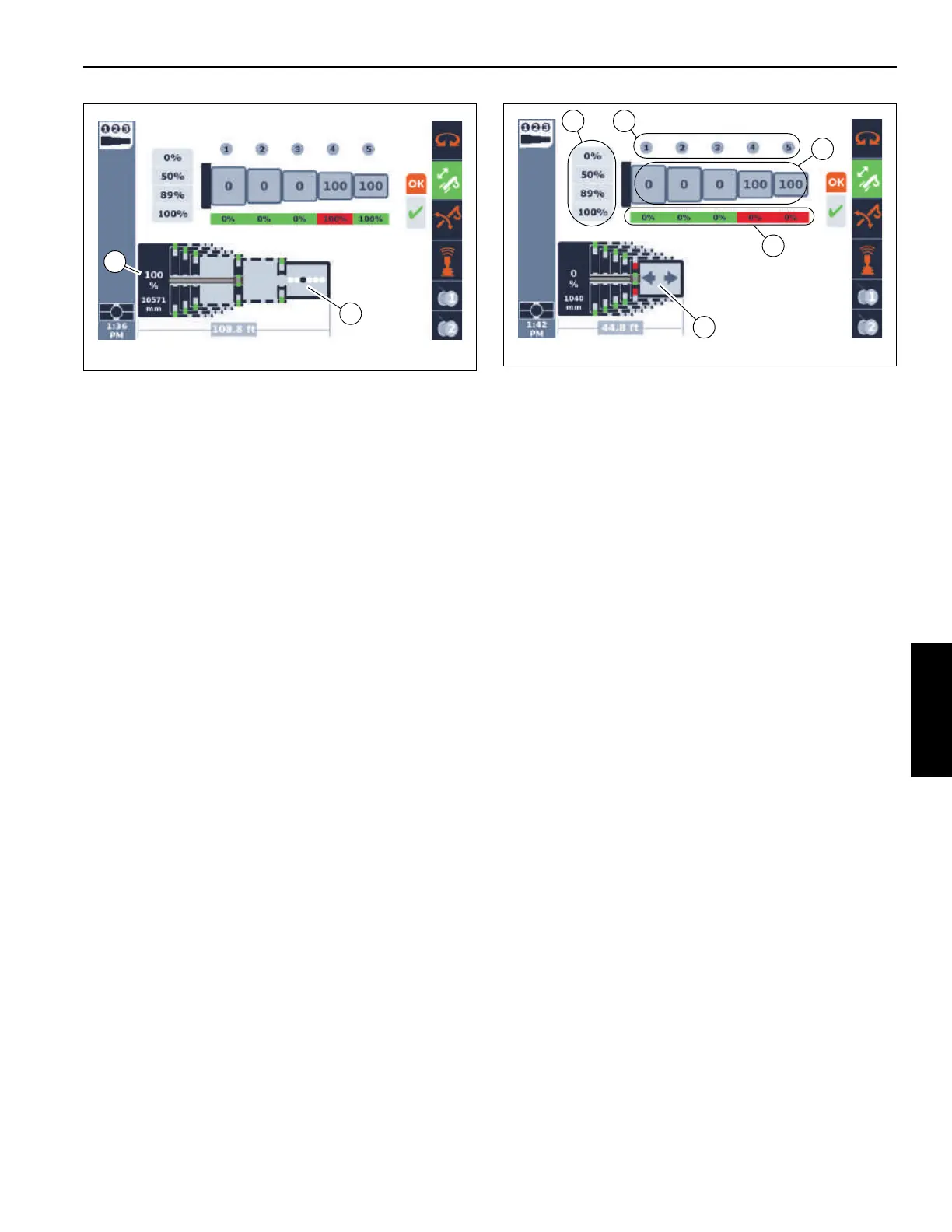